Abstract
The characteristic ability of Streptococcus lactis and inability of Streptococcus cremoris to hydrolyze arginine formed the basis for the development of a differential agar medium to separate these species in pure and mixed cultures. Ammonia liberated from arginine was detected by the pH changes occurring in the medium. The agar contained milk as the sole source of carbohydrate, arginine as the specific substrate, diffusible (K2HPO4) and nondiffusible (CaCO3) buffer systems, and a suitable pH indicator in addition to other ingredients. The nondiffusible buffer system afforded the localization of pH changes, and, hence, the indicator color changes immediately around individual colonies appearing on the medium. S. cremoris produced yellow colonies surrounded by yellow zones on this purple medium because of their ability to produce acid from lactose in the milk. S. lactis, on the other hand, first produced colonies similar to S. cremoris, but subsequent color reversal of pH indicator with the liberation of NH3 resulted in the discharge of the yellow color. Hence, S. lactis colonies were white and devoid of zones. The difference in their colony color allowed the identification of the species in a mixture of S. cremoris and S. lactis strains. The medium was found suitable for both qualitative and quantitative differentiation.
Full text
PDF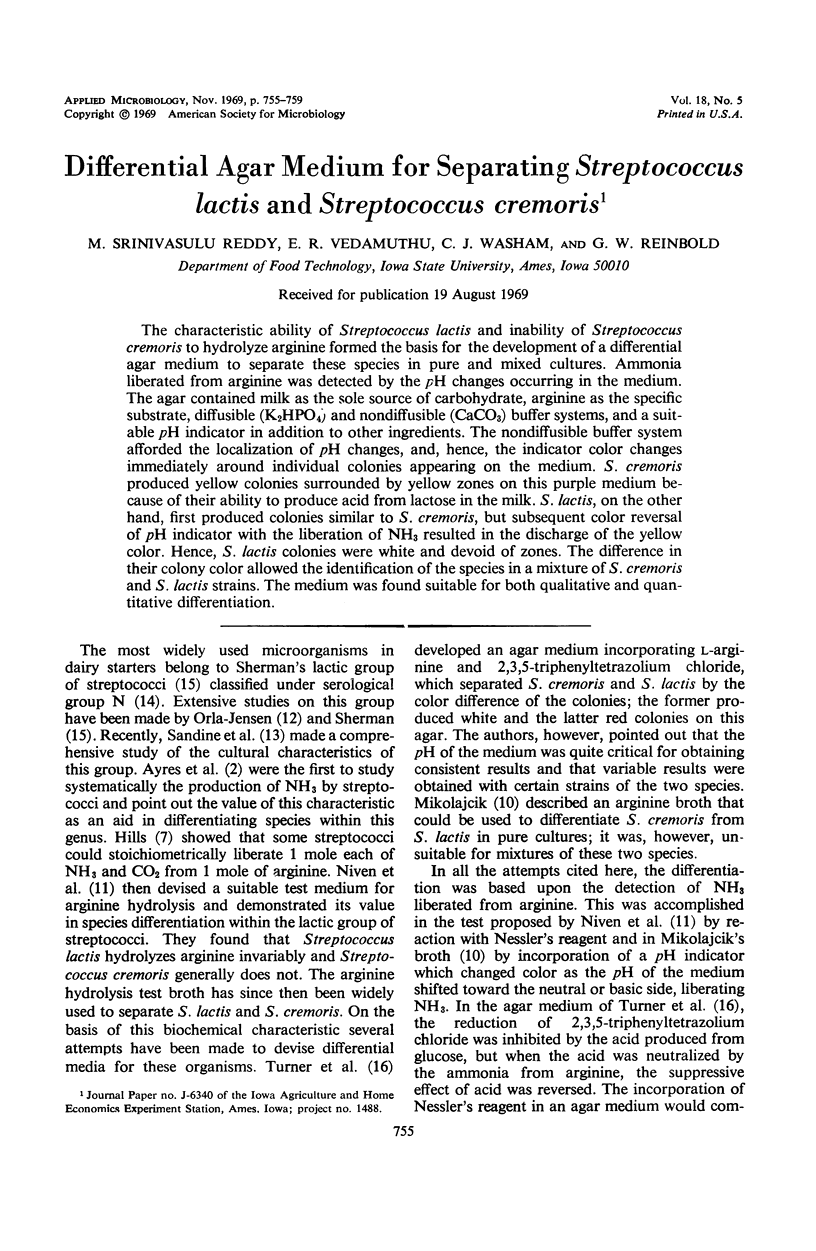
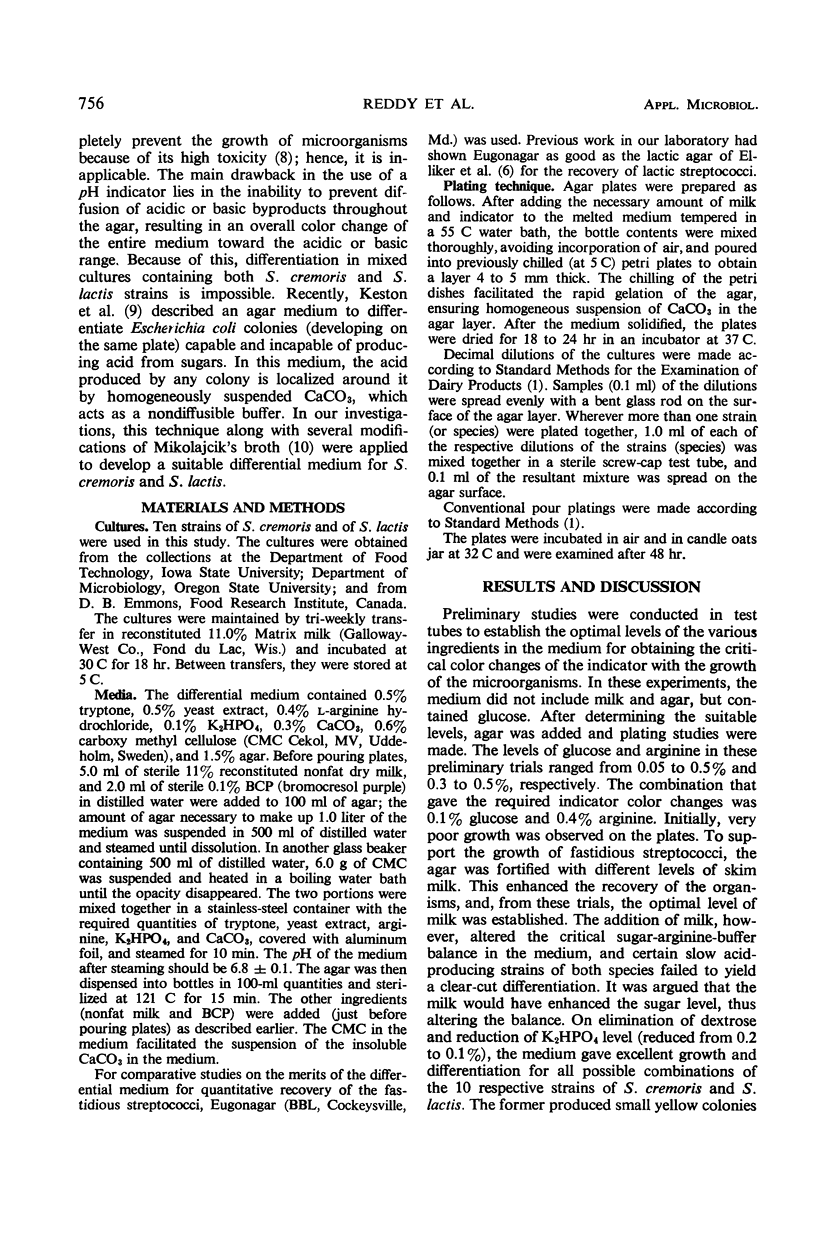
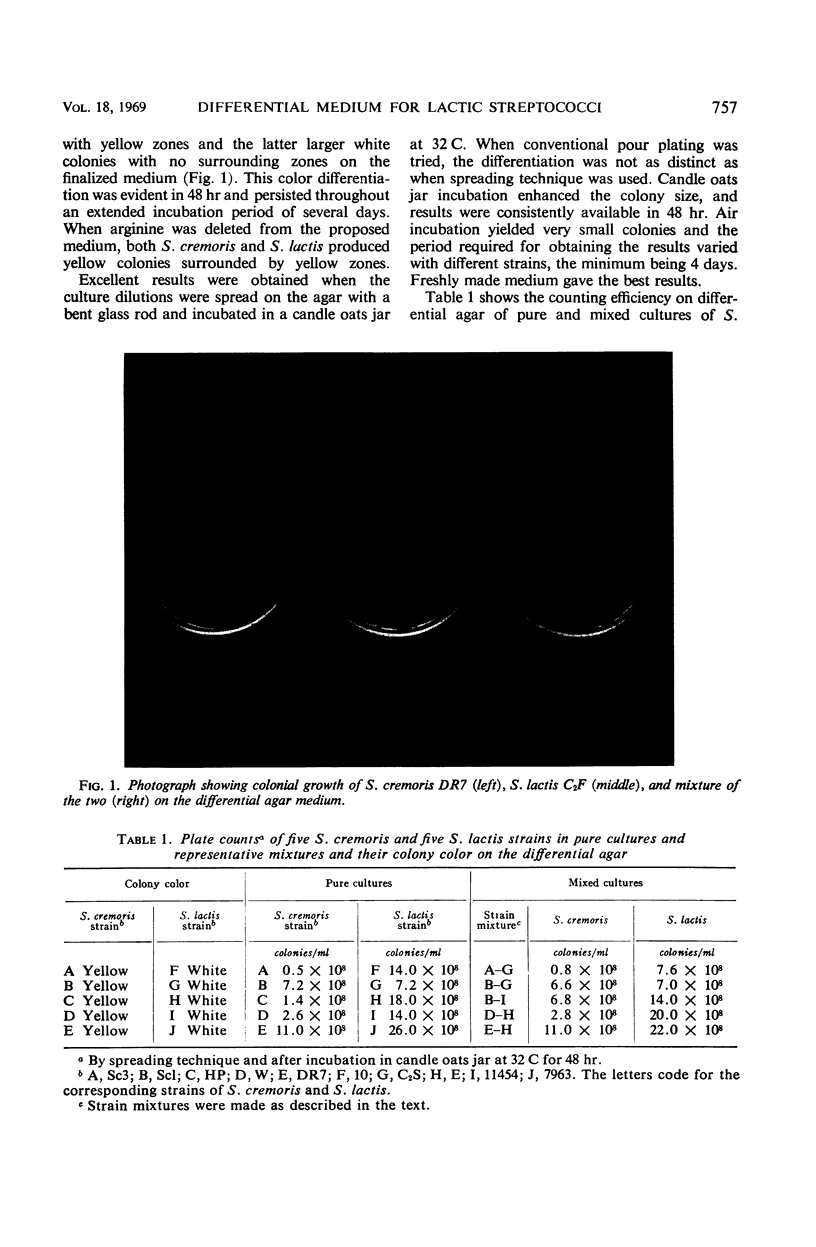
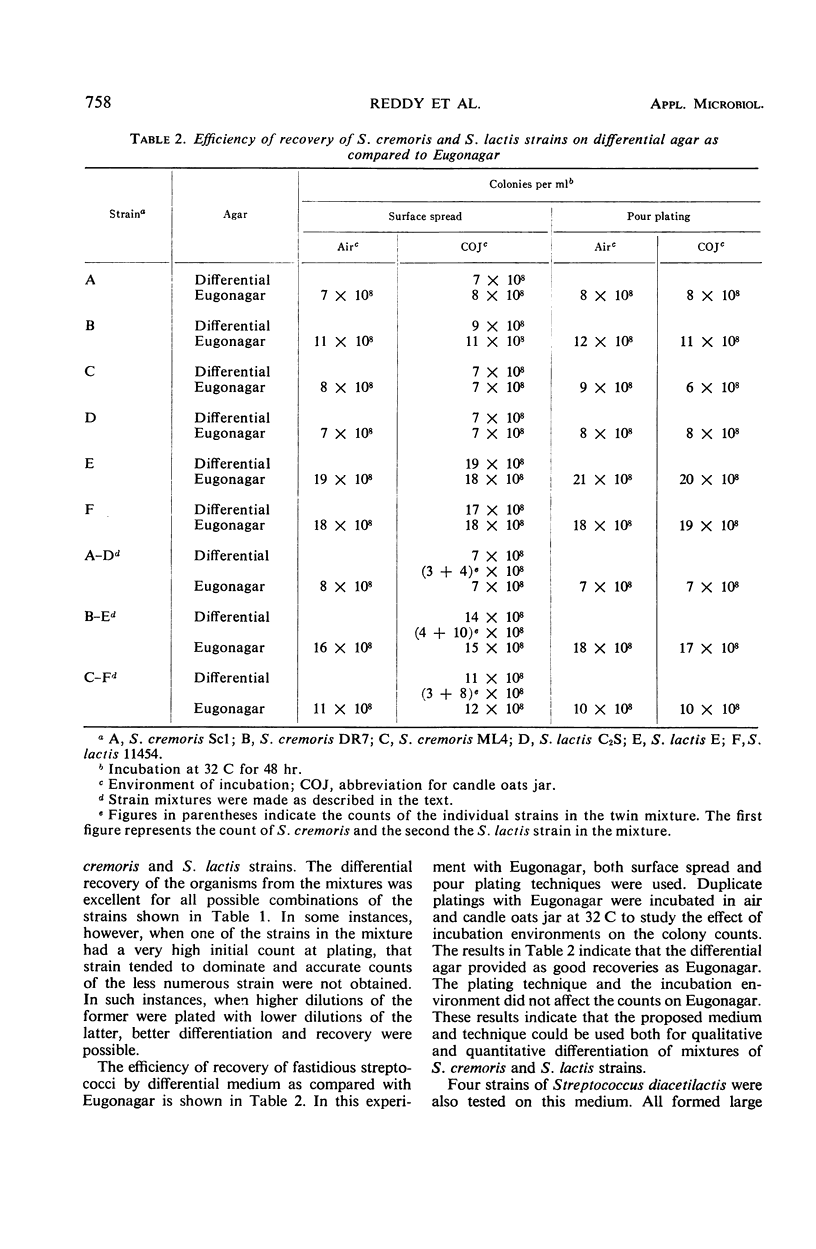
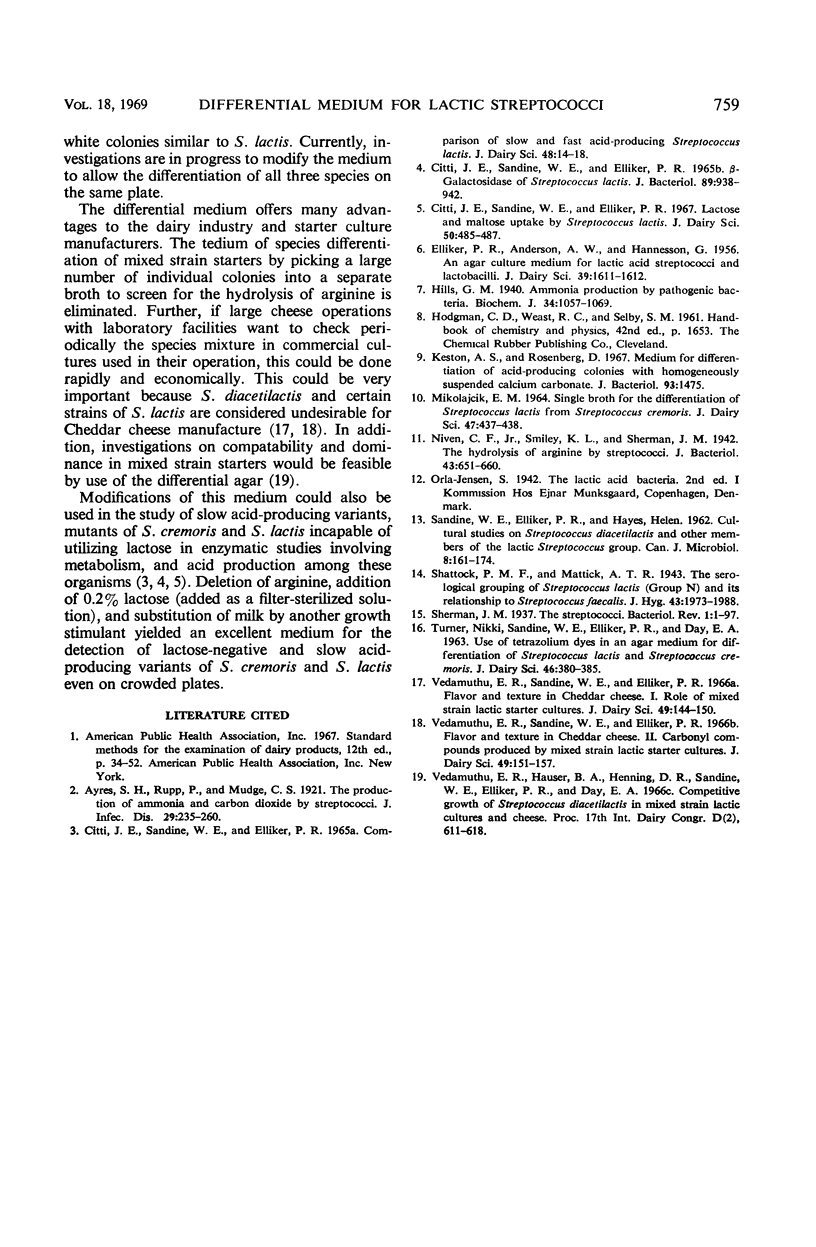
Images in this article
Selected References
These references are in PubMed. This may not be the complete list of references from this article.
- CITTI J. E., SANDINE W. E., ELLIKER P. R. BETA-GALACTOSIDASE OF STREPTOCOCCUS LACTIS. J Bacteriol. 1965 Apr;89:937–942. doi: 10.1128/jb.89.4.937-942.1965. [DOI] [PMC free article] [PubMed] [Google Scholar]
- CITTI J. E., SANDINE W. E., ELLIKER P. R. COMPARISON OF SLOW AND FAST ACID-PRODUCING STREPTOCOCCUS LACTIS. J Dairy Sci. 1965 Jan;48:14–18. doi: 10.3168/jds.s0022-0302(65)88152-8. [DOI] [PubMed] [Google Scholar]
- Citti J. E., Sandine W. E., Elliker P. R. Lactose and maltose uptake by Streptococcus lactis. J Dairy Sci. 1967 Apr;50(4):485–487. doi: 10.3168/jds.S0022-0302(67)87451-4. [DOI] [PubMed] [Google Scholar]
- Hills G. M. Ammonia production by pathogenic bacteria. Biochem J. 1940 Jul;34(7):1057–1069. doi: 10.1042/bj0341057. [DOI] [PMC free article] [PubMed] [Google Scholar]
- Keston A. S., Rosenberg D. Medium for differentiation of acid-producing colonies with homogeneously suspended calcium carbonate. J Bacteriol. 1967 Apr;93(4):1475–1475. doi: 10.1128/jb.93.4.1475-.1967. [DOI] [PMC free article] [PubMed] [Google Scholar]
- Niven C. F., Smiley K. L., Sherman J. M. The Hydrolysis of Arginine by Streptococci. J Bacteriol. 1942 Jun;43(6):651–660. doi: 10.1128/jb.43.6.651-660.1942. [DOI] [PMC free article] [PubMed] [Google Scholar]
- SANDINE W. E., ELLIKER P. R., HAYS H. Cultural studies on Streptococcus diacetilactis and other members of the lactic Streptococcus group. Can J Microbiol. 1962 Apr;8:161–174. doi: 10.1139/m62-021. [DOI] [PubMed] [Google Scholar]
- Sherman J. M. THE STREPTOCOCCI. Bacteriol Rev. 1937 Dec;1(1):3–97. doi: 10.1128/br.1.1.3-97.1937. [DOI] [PMC free article] [PubMed] [Google Scholar]



